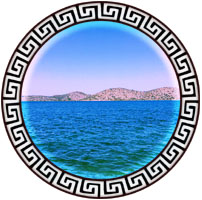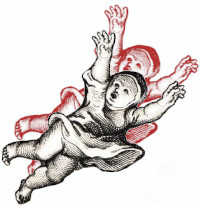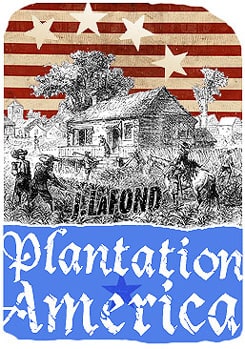Of the many books on Tecumseh available at the used book store next to the motel in San Jose, this was the thinnest and had the most readable type. The style is pleasing and the narration excellent. This review is largely a look at incidental evidence of tribal ethnicity within the text.
Jim Poling is a journalist with a piercing style, who has a unique perspective on Tecumseh. Tecumseh is the single most written about figure from American History by 20th and 21st century biographers. George Washington, Robert E. Lee, Lincoln, Patton, in the rear view mirror of the American literary mind, are dim candles when held against the light of Tecumseh. Poling is fascinated with that, in that he is a Canadian. He points out that Canadians don’t have much interest in Tecumseh, that he gets but one mini-park where he fell defending Canada.
Poling makes the correct case that Canada remained in British hands mostly because of the efforts of the doomed Indian who cared not a lick for Canada and was simply fighting a rear guard action after being driven from his Ohio home. Poling also points out that Canadians burned Washington D.C. soon after the “King of the Forest,” as one British officer styled Tecumseh, fell. That is a sentiment that about 30% of Americans would currently second in Tecumseh’s far away grave. This reader posits here that the reason why most Americans, and more so in the Eastern United States, positively identify with vanquished tribal peoples of the past is that those people died fighting the hideous, homosexual, economic, satanic beast that currently enslaves us. If you are born under USG, whereever you go in the world outside of it, you must pay taxes, your membership dues in the world eating machine…
Poling provides an excellent chronology at the end of the book, comparing Shawnee and Canadian history side by side. He begins and ends the book with the Tecumseh Curse, whose nemesis, Harrison, died in office [an election earned on Tecumseh’s bones] and that he and other presidents born on a year ending in a zero died or where stricken with calamity in office. I think the curse has played out. But who knows.
Tecumseh and his brother predicted an eclipse and an earthquake, and there is much speculation on this. There is extensive dialogue concerning Tecumseh’s speeches written by Americans who heard them and spoke Shawnee. Tecumseh’s spoken language is murky. He seems to have understood English but declined to speak it. It may be that he could even read and write. I will consult other more in depth biographies for this.
The following concerns the ethnicity of the Shawnee as gleaned from this concise history.
Tecumseh, who was named either for a passing meteor or a panther shaped constellation, was called by the Shawnee either CouchingPanther or PantherPassingAcross [same thing in a forest], and by the Muscogee “ShootingStar” after the comet that was in the southern sky as he preached against American expansion in 1811, predicted the New Madrid Earthquake of the same year. He was a member of the Panther Clan. [1]
The Frenchman who new him and painted his likeness depicted a tanned man of lean European features.
Tecumseh had an adopted American brother named Shawtunte, who had been Richard Sparks of Wheeling West Virginia.
Methoataaskee, the mother of Tecumseh was a southeastern woman met near Alabama or Georgia by her nomadic husband. Tribes in this area were racially, heavily mixed with Scottish and English. [2]
Stephen Ruddell, captured from Ruddell’s Station Kentucky, was Tecumseh’s blood brother. He later wrote of Tecumseh:
“...he always distinguished himself by his activity, strength and skill.”
American and British military officers disagreed if Tecumseh was 5’ 9”, 5’ 11” or six feet. This may have to due with him wearing moccasins and them wearing heeled boots.
His eyes are described as hazel and had the mutable quality of being able to darken or brighten with passion, as is described of Nathan Bedford Forest, who was also said to have eyes that could glow with intensity and darken with grim intention.
John Richardson, who served in battle alongside Tecumseh at 15 in 1813, would go on to be Canada’s first international novelist, author of Wacousta and also The Canadian Brothers, left descriptions of Tecumseh which agree with the general impression that he was “...bout five feet ten inches, tall, muscular; someone who commanded respect but had a friendly disposition.”
An unnamed eye witness declared, concerning an 1803 meeting, “...he appeared one of the most dignified men I ever beheld.”
U.S. Army Colonel Hatch wrote, “The personal appearance of this man was remarkably fine… his eyes clear, transparent hazel… in conflict like balls of fire… one of the finest looking men I have ever see…” These words written by an American expansionist dedicated to driving the tribes to extinction, a class of man who would be described by modern academics as a “racist” suggest that Tecumseh had a more aquiline and angular set of features than the more robust Asiatic Amerindian features combined with the runaway Irish/Scottish/English physiognomy normally depicted in period art in such portraits as that of Pontiac and his fellows at treaty with English officers.
In early life, Tecumseh is noted a shaving dressed as an American. But once he became a revolutionary figure, always dressed in buckskins, tailored buckskins.
Ruddell insisted along with others that Tecumseh never tolerated mistreatment of prisoners and that he was against torture from a very young age. He was universally regarded as generous. However, he did divorce a wife for imperfectly cooking a turkey dinner for guests.
An interesting passage from Poling’s history follows [3]:
“Dragging Canoe refused to recognize the treaties and took his rebels to Chickamauga Creek… they were not just Cherokees, but Creeks, Shawnees, and other Indians, plus rebel whites and African Americans who were opposed to the settlement of the Tennessee frontier.”
Dragging canoe would not be the last American rebel to fight at Chickamauga.
Notes
-1. Eastern Indians used clan structures more akin to Gaelic Europeans than to the social organization of the Western Tribes.
-2. While in Portland I attend an elders dinner every Tuesday with a blonde Cherokee named Anna.
-3. Editor, please search for information and likenesses concerning Dragging Canoe.
…
To support Plantation America research and examine annotated and summarized primary source texts go to:
link › patreon.com/jameslafond











